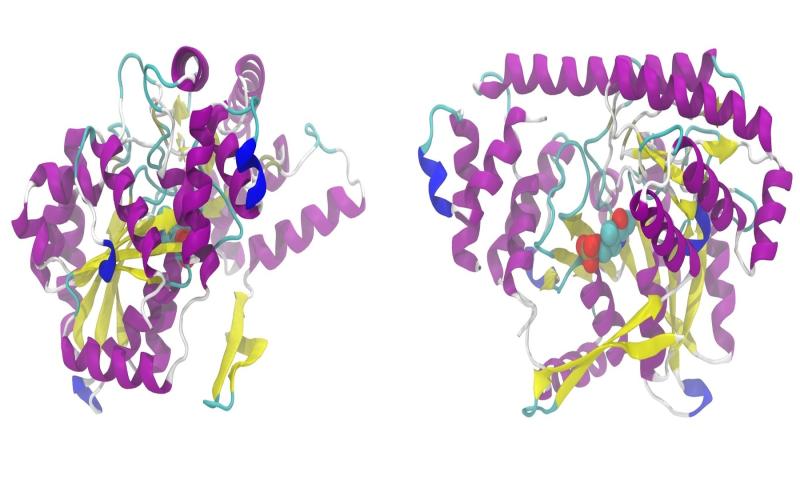
Biology textbooks teach us that all eukaryotic cells contain a variety of membrane-bound organelles that compartmentalise the cell, store specific molecules, and perform specialised functions. For example, the endoplasmic reticulum is responsible for folding proteins and transporting them to the Golgi apparatus, which in turn, sorts and packages proteins before sending them off to other parts of the cell. However, a growing body of current research reveals that there exists another type of organelles called membrane-less organelles. These organelles are biomolecular condensates of proteins and nucleic acids and are formed via a process called liquid-liquid phase separation (LLPS). These intracellular condensates perform critical cellular functions, like synthesising and processing pre-ribosomal RNA.
How are these condensates formed? When oil is added to water, it collects into dense droplets and floats on the water. Similarly, a homogeneously mixed protein solution may convert via LLPS into a dense phase comprising liquid droplets, and a light dilute phase. These liquid droplets, thus separated, form condensates. Though this happens naturally in all cells, we now know that Intrinsically Disordered Proteins (IDPs), which lack an ordered three-dimensional structure, can cause such biological phase separation that is crucial for cellular functions. However, the maturation or hardening of liquid condensates into a gel/solid-like state disrupts cellular functioning, resulting in the abnormal phase transition that is associated with neurodegenerative diseases like Alzheimer's disease.
In a recent study, researchers at the Indian Institute of Science Education and Research (IISER) Mohali, have studied the mechanism behind the phase separation of the tau protein fragment that forms characteristic aggregates associated with Alzheimer's disease. The study, published in the Journal of Physical Chemistry Letters, was funded by the Ministry of Human Resource Development (MHRD) (Centre of Excellence grant) and the Science and Engineering Research Board (SERB), Department of Science & Technology (DST).

A confocal image of liquid droplets of tau k18 labelled with a fluorescent dye (image provided by the Mukhopadhyay Lab).
Healthy neurons are internally supported by microtubules, which help guide nutrients throughout the neuron. Tau is a highly soluble Intrinsically Disordered Protein that stabilises these microtubules. In the brains of people with Alzheimer's, tau proteins detach from the microtubules and stick to other tau molecules to form threads. These threads then aggregate into neurofibrillary tangles. But, what underlying molecular changes cause these proteins to detach and aggregate?
"Recent studies have indicated that LLPS can promote tau aggregation, which is a hallmark of Alzheimer's disease," explains Prof Samrat Mukhopadhyay, the corresponding author of the study. Prof Mukhopadhyay works extensively on the intriguing molecular characteristics of a wide range of IDPs involved in the physiological functioning of neurodegenerative diseases. "Therefore, it is important to unveil the pathway by which tau undergoes phase separation and maturation," he says.
The researchers of the current study used highly-sensitive fluorescence techniques to shed light on the formation of tau liquid droplets. A liquid state is characterised by the continual making and breaking of weak, noncovalent bonds. In other words, in a liquid state, these weak interactions have to be transient. The tau protein is known to undergo phase separation to form liquid droplets under natural conditions. Just like a coiled-up spaghetti unit cannot interact with another coiled spaghetti, in the dispersed form, tau is somewhat collapsed and cannot interact with the other tau protein molecules because the interacting units are hidden.
The study found that in the phase-separated liquid droplets, the unwinding of tau’s polypeptide chains allow the chains to interact with each other, giving rise to the fluidic nature of the protein assembly. However, this liquid droplet state is precarious. Specific mutations or other factors can convert these transient interactions into persistent ones, causing the proteins to solidify into ordered aggregates that can disrupt the functioning of the neurons.
The researchers are now trying to understand this process better and find what causes these transformations.
"We are now working on a range of other molecular factors and post-translational modifications, such as phosphorylation, that can alter the course of the phase separation from a liquid-like functional state to a gel- or solid-like pathological state. A line of evidence indicates that the liquid condensed phase is at the crossroad of cellular function and pathology. We believe that our unique combination of tools will allow us to unravel the key pathway to the disease-causing form," says Prof Mukhopadhyay.
How does this study help in finding a cure for Alzheimer's?
"The cellular mechanism of onset and progression of Alzheimer's involves a complex interplay of a large number of molecular players, and it's not easy to predict the future. But we hope that intense and diverse efforts from a large number of research enterprises worldwide will soon converge and culminate into an effective therapy," signs off Prof Mukhopadhyay.
This article has been run past the researchers, whose work is covered, to ensure accuracy.






